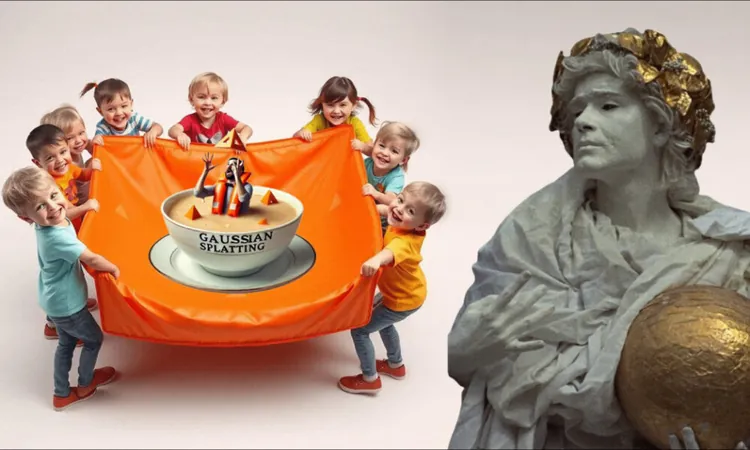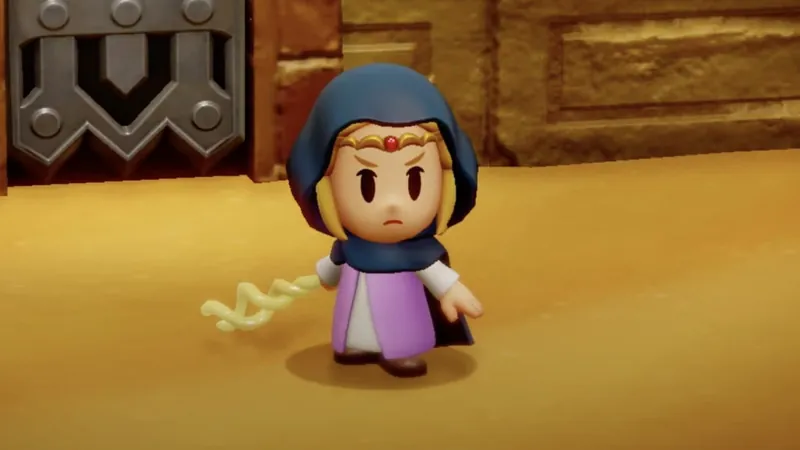
Revolutionizing Image Editing: The Power of Gaussian Splatting with MiraGe
2024-10-03
In a groundbreaking collaboration between researchers from Poland and the UK, an innovative technique titled "MiraGe" has emerged, promising to transform the way we edit images. By leveraging Gaussian Splatting, this method allows users to temporarily visualize selected portions of an image in a 3D space, enabling precise modifications and manipulations before applying the changes back to the original image.
The ingenious aspect of the MiraGe system is its ability to temporarily convert a Gaussian Splat into a mesh of triangles, entering what's described as a 'CGI state.' This state opens up the possibility of integrating a physics engine that interprets natural movement, allowing for remarkable transformations that can change the static state of objects or even create animations. Unlike popular generative AI tools like Adobe's Firefly, which relies on Latent Diffusion Models (LDMs), MiraGe operates distinctly without generative AI, making it a refreshing addition to the image editing landscape.
MiraGe interprets user selections by creating a mirror image of the chosen section, approximating its 3D coordinates, and transferring this representation into a splat that enables 3D manipulation. In stark contrast to traditional editing techniques, where alterations can often appear synthetic and disjointed, the intuitive design of MiraGe captures the nuances of human perception, allowing for complex and flexible image editing reminiscent of how a photograph is viewed naturally.
The authors have drawn comparisons between MiraGe and existing software, noting its superior performance in editing tasks. For example, users of zBrush will recognize similar functionalities, though zBrush typically flattens 3D models to apply 2D details, while MiraGe allows for dynamic interactions by operating in both dimensions.
The research team consisting of members from Jagiellonian University in Kraków and the University of Cambridge has made the full code of the MiraGe system accessible on GitHub, making it a potentially game-changing tool for artists and editors alike.
Unlocking 3D Editing Potential
The methodology behind MiraGe hinges on Gaussian Mesh Splatting (GaMeS), a technique that interprets Gaussian Splats as traditional CGI meshes. This connection allows for the application of established CGI modification techniques that have evolved over decades. The system works by interpreting 'flat' Gaussians within a 2D space and utilizing GaMeS to pull content into 3D space temporarily, enabling users to engage in edits that would have been challenging to perform using conventional methods.
The paper explains that MiraGe employs a unique system of two opposing cameras to enhance the editing process. This setup not only reconstructs the original image but also models a mirror reflection, enriching the editing experience. This innovative approach represents images as translucent sheets in 3D space, allowing users to manipulate their mirrors effectively—significantly enhancing the realism and fidelity of edits.
The results of using MiraGe have shown promise, particularly when comparing it to older methods using Implicit Neural Representations (INRs), which often struggle with direct manipulation. The explicit nature of Gaussian Splatting provides clear X/Y/Z Cartesian coordinates, simplifying the editing process.
MiraGe can integrate seamlessly into popular 3D software like Blender, expanding its accessibility across various design communities. Two deformation methods—Amorphous and Graphite—give users different approaches to handling images in 3D space, each offering a distinct set of advantages and design considerations.
The Future of Image Editing Is Here
In conclusion, the revolutionary adaptation of 2D Gaussian Splatting with MiraGe heralds the emergence of a sophisticated alternative to conventional image editing paradigms that often rely heavily on generative AI. By enabling detailed and precise edits pulled from an image into 3D space, this new technology challenges the limitations presented by LDMs and sets the stage for a future where image manipulation becomes not only more effective but also more aligned with human visual perception.
If you’re excited by the possibilities of elevating your design projects or simply curious to see this technology in action, stay tuned for further advancements in image editing that promise to change the creative landscape forever!





 Brasil (PT)
Brasil (PT)
 Canada (EN)
Canada (EN)
 Chile (ES)
Chile (ES)
 España (ES)
España (ES)
 France (FR)
France (FR)
 Hong Kong (EN)
Hong Kong (EN)
 Italia (IT)
Italia (IT)
 日本 (JA)
日本 (JA)
 Magyarország (HU)
Magyarország (HU)
 Norge (NO)
Norge (NO)
 Polska (PL)
Polska (PL)
 Schweiz (DE)
Schweiz (DE)
 Singapore (EN)
Singapore (EN)
 Sverige (SV)
Sverige (SV)
 Suomi (FI)
Suomi (FI)
 Türkiye (TR)
Türkiye (TR)